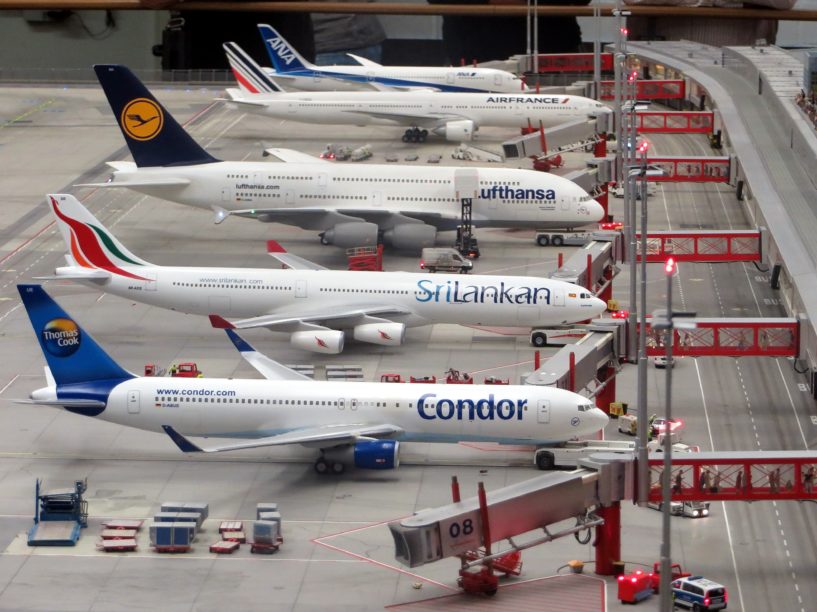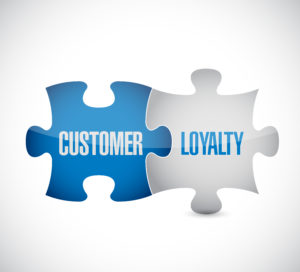
Airline mile points on credit cards are a great way to increase customer engagement, because they’re a dream come true for travelers. After building up enough points on a credit card linked to an airline brand, frequent flyers  accumulate “frequent flyer miles” that they can cash in for flights anywhere in the world. As a result, customer loyalty is rewarded, which in turn keeps those customers coming back to the same airline. In short, it creates loyal customers for life.
accumulate “frequent flyer miles” that they can cash in for flights anywhere in the world. As a result, customer loyalty is rewarded, which in turn keeps those customers coming back to the same airline. In short, it creates loyal customers for life.
Who Pays for Frequent Flyer Loyalty Programs?
When you rack up enough loyalty points for a flight, it feels like a free trip! But is anything truly ever “free?” As our investigation discovered, it’s actually merchants who are bearing the cost of these accrued airline miles, through the processing fees charged by credit card companies.
When a customer earns miles as part of a flyer program, there is a cost associated with that. And someone, somewhere, has to pay it. That’s where fees like interchange fees and foreign transaction fees come in. When legislation like Dodd-Frank cut the maximum fees that credit card companies could charge, loyalty programs took hold.
 Card companies shifted to interchange fees for more profit, and those fees are passed onto merchants. Merchants have had to charge more, but customers paying with rewards cards will earn reward points that are funded by these same fees.
Card companies shifted to interchange fees for more profit, and those fees are passed onto merchants. Merchants have had to charge more, but customers paying with rewards cards will earn reward points that are funded by these same fees.
The end result is this: Customers earn bonus miles through their card’s rewards program, while merchants pay higher interchange fees.
Loyalty Program Costs
In Europe, interchange fees are capped at a very low amount. This is great for merchants, but has resulted in credit card companies getting rid of their travel rewards cards, and reducing other types of loyalty rewards and benefits for cardholders.
The effect is the same for loyalty programs that get you elite status, early boarding, and other perks. Each of these perks comes with a cost, and the cost is usually borne by merchants in the form of interchange fees from credit card issuers.
Customer Loyalty & Your Interchange Rate
This creates a secondary form of customer loyalty: loyalty to the credit card brand. With the partnership between  airlines and credit card brands, loyalty to both is rewarded, while merchants bear the cost.
airlines and credit card brands, loyalty to both is rewarded, while merchants bear the cost.
As time goes on, more and more customer loyalty programs will begin issuing rewards based on money spent rather than simply on mileage. This means that first class flyers will be rewarded more than those who book economy class flights, racking up better rewards for their hard-earned dollar. By doing it this way, more of the cost can be reliably offset with higher interchange fees on the credit cards.
How to Offset High Interchange Rates
Since loyalty programs require credit card issuers to charge merchants higher interchange rates, many merchants respond by raising costs on their customers. Unfortunately, this is the easiest and most direct way to offset the extra cost. The good news for customers is that spending more money at your store can sometimes net them even more points.
You can also find ways to encourage customers to pay in cash, reducing the number of credit card transactions you process. The downside to this strategy? Lower transaction volume means higher overall interchange rates, so you might end up cancelling out part of or all of the benefit you get from cash customers.
 Another potential way to offset the costs is to make your company more financially efficient. By lowering your bills and finding better ways to budget, you can make your business lean, saving precious pennies on things like payroll, inventory, even electricity. This frees up money for paying the hidden costs of loyalty programs, but will also make your business work better in the long run.
Another potential way to offset the costs is to make your company more financially efficient. By lowering your bills and finding better ways to budget, you can make your business lean, saving precious pennies on things like payroll, inventory, even electricity. This frees up money for paying the hidden costs of loyalty programs, but will also make your business work better in the long run.
Final Thoughts
It’s an unfortunately reality of airline miles and other loyalty programs that merchants are the ones who shoulder the financial burden. How this might change in the future is anyone’s guess, but in the meantime, do what you can to offset the costs of these programs by becoming a more efficient business and negotiating the lowest possible interchange rate from your credit card processor.
Latest Posts
March 4, 2020
February 27, 2020
CATEGORIES

